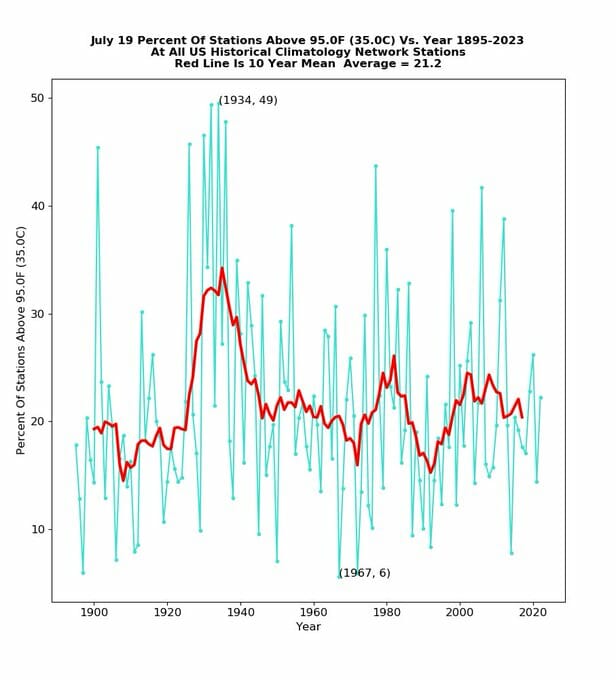The summer of 2023 is cooler than usual, as the graph shows.
Nonetheless, the climate change chorus claims that this summer is worse “in profound ways,” and there are computer models about hypothetical climate “tipping points”—not “documentation” of actual occurrence.

For perspective, Phoenix had 18 consecutive days of 110° temperatures in 1974, and Death Valley hit 134° in 1934. The six hottest July 19ths in the U.S. occurred in 1934, 1932, 1936, 1930, 1926 and 1901—when almost half of the US was over 95 °F (35 °C). Atmospheric CO2 levels were much lower then.
Every day, a new heat record is being set somewhere. If you have temperature stations at 10,000 locations and they have an average length of 100 years, then during a 100-day-long summer, you would expect to get about 10,000 daily maximum temperature records set.
What will happen to the climate if we spend trillions of dollars and turn off 80 percent of the world’s energy supply (“fossil fuels”)? Will the constantly postponed predicted climate crisis be averted? Will the global average temperature drop a fraction of a degree, as computer models predict? Will you feel cooler at 109.9 than at 110°?
What will happen to you without adequate electricity to cool—or heat—your home? Or without gasoline or diesel-powered vehicles? (Note that heat waves can cook electric car batteries too.)
Additional information:
- The effect of Net Zero energy policy: Terry Gannon lecture at 41st annual meeting of Doctors for Disaster Preparedness
- Climate change model predictions vs. observations
- Health effects of climate change
Article by Jane M. Orient, M.D.












